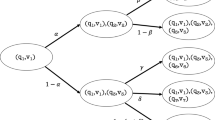Abstract
Besides the usual techniques of computer diagnosis, an approach using systems analysis has been conceived. In chronic diseases, such as the nephrotic syndrome, where patients lose their symptoms only during the continuous administration of drugs, it might be possible to deduce the condition of the patient and to assess the effect of drug therapy from a sequence of clinical examinations. After this, it might also be possible to infer the severity of the patient's condition and to predict the final effect of the drug.
Sommaire
Outre la technique courante de diagnose employant des calculatrices électroniques, un essai a été fait d'utiliser l'analyse du système. Dans les maladies chroniques, telles que le syndrome néphrotique, où les malades ne perdent leurs symptômes que durant l'administration permanente des médecines, il parait possible de décider la condition du malade et d'évaluer l'effet thérapeutique de la drogue au moyen d'une série des examens cliniques. En suite, il sera—peut-être—possible d'arriver à une décision quant la sévérité de la condition du malade et de prédire l'effet concluant d'une préparation particulière.
Zusammenfassung
Zusätzlich zu den herkömmlichen Verfahren der Computerdiagnose wurde ein Verfahren entwickelt, das sich auf eine Systemanalyse stützt. Bei chronischen Erkrankungen wie z.B. dem nephrotischen Syndrom, in deren Verlauf die Patienten ihre Krankheitssymptome nur bei fortgesetzter Verabreichung von Medikamenten verlieren, könnte es sich als möglich erweisen, durch eine bestimmte Folge klinischer Untersuchungen das Krankheitsbild des Patienten zu definieren und die Wirksamkeit der medikamentösen Therapie heitsbild des Patienten zu definieren und die Wirksamkeit der medikamentösen Therapie festzustellen. Anschließend ließen sich auch Rückschlüsse auf die Schwere der Erkrankung des Patienten ziehen und der endgültige Effekt der medikamentösen Behandlung bestimmen.
Similar content being viewed by others
References
Miyake, T. andTorizuka, K. (1966) A statistical study on the effect of131I-therapy in hyperthyroidism (in Japanese).Kakuigaku 3, 79–80.
Nagumo, J. (1968) System of clinical medicine from the standpoint of control theory (in Japanese).J. Soc. Instrum. Control Engng 7, 386–390.
Nagumo, J. andArimoto, S. (1965) A mathematical theory of the system of clinical medicine (in Japanese).Jap. J. med. Electron. biol. Engng 3, 123–131.
Toyama, S., Miyakawa, S., Suzuki, K. andChudo, H. (1964) Severity and anti-hypertensive effect in hypertension (in Japanese).Ronenbyo 8, 315–319.
Yoshitoshi, Y. andNagasaka, M. (1965) Edema as an abnormal water and electrolyte regulation. An essay on regulatory pathology (in Japanese).Nihon Rinsho,23, 2080–2085.
Author information
Authors and Affiliations
Rights and permissions
About this article
Cite this article
Nagasaka, M., Nakamura, K., Kinouchi, T. et al. A model of the condition of a nephrotic patient and the effect of drug therapy. Med. & biol. Engng. 8, 271–279 (1970). https://doi.org/10.1007/BF02477244
Received:
Issue Date:
DOI: https://doi.org/10.1007/BF02477244




